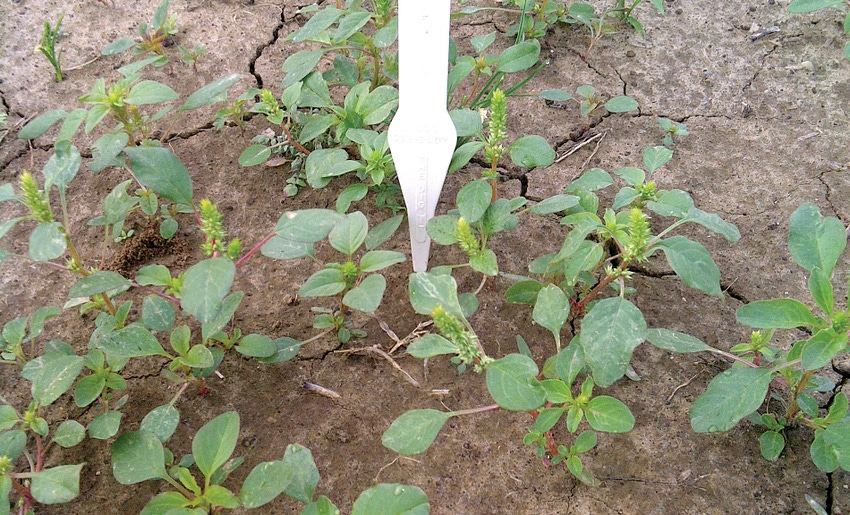April 11, 2012

I have been covered up with calls on emerged pigweeds: how big some are, that some are making seed heads, etc.… folks who have truly gotten mad at the weeds and are going after them. I also talk to far too many who do not have the problem as bad yet and seem very complacent or still in denial.
The most common comment I receive is, “I have been reading your articles.” Great, but that is not enough. I lifted a slide from Bob Scott, that I use in all of my talks, that has three bullet points: Be Aware, Be Informed, and Be Proactive. I am afraid too many are good with the first two but are still not proactive enough, which is the hard part. You can go from denial to out of business in two years with Palmer pigweed.
Last week I wrote about stacking or overlapping residual herbicides. The way this year has started out should make it easy to see why this is necessary. I am not the big fan of residuals that some are. I spent much of my early career in the days when we were dependent on them. I am not happy that we are again depending on them, but that is where we are. Residual herbicides are simply inconsistent — always have been, always will be.
I wish I had a dollar for every time I have been told you do not have to worry about getting them activated early in the year. We have already had a lot of residual herbicides applied in February and March that went two to four weeks without a rain for activation. The way you have to compensate for that inconsistency is to make multiple applications — stacking or overlapping. This way you hope you get some of them activated and you also hope you have another one kicking in as the first one is playing out.
With everyone who has called this year, I have been adamant that they try to get Valor, Envive, Valor XLT or a similar product out before planting if they are in a Roundup Ready program. Most of these applications are going out with Gramoxone as pigweeds or other weeds are already emerged. I consider this application a must in a Roundup Ready program. I am just as adamant about applying a pre-emergence herbicide at planting even if the field is clean. If anything is up, add some more Gramoxone. Then add a residual herbicide to at least one of your glyphosate applications.
If you rely only on a residual herbicide at planting and miss the timely rain, you are immediately behind the curve. There is no way we will ever get all of the early postemergence herbicides out timely this year. The window can be as narrow as a couple of days. If you fail to get your residual activated and miss the early postemergence timing a couple of days, your program is dead in the water. That is why you must overlap residuals in a Roundup Ready program.
The other way to compensate for inconsistent residual herbicide performance is to use a program with better postemergence control. The LibertyLink crop acreage continues to increase and you simply have more postemergence firepower in that program as Liberty (Ignite) has more postemergence activity on pigweeds than the Flexstar, Blazer, and Cobra herbicides. Again, with that program though, use a residual.
I am not as adamant about stacking as many residuals in a LibertyLink program, but you must take some of the pressure off with residuals. If you don’t, the high pigweed populations will simply overpower the postemergence treatments. Also, in the high-population fields — which most are — do not hesitate overlapping residuals in the LibertyLink system. We are past the point of trying to figure out how little we can get by with for weed control. You had better be throwing the best of everything at the pigweeds or they will put you out of business.
About the Author(s)
You May Also Like




